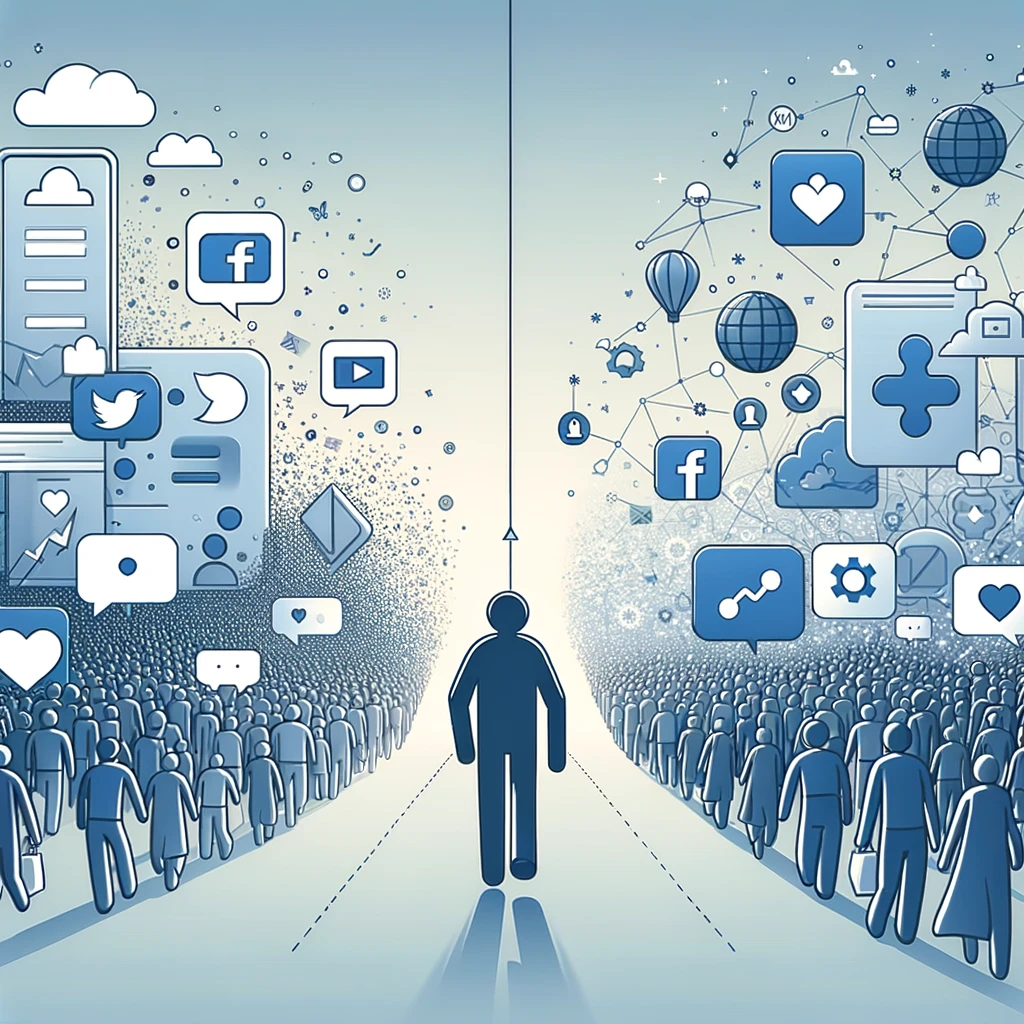Using AI to analyse huge amounts of data, here are some subtle changes happening to humans that we might not be aware of:
- Subconscious Echo Chambers in Music Streaming: Personalized algorithms subtly influencing emotional states and worldviews by curating music that reflects and reinforces listeners’ current moods and biases, potentially narrowing emotional and cultural exposure.
- Selective Memory Curation through Digital Archives: The unconscious shaping of personal memory and self-perception through selective archiving and revisiting of digital content, potentially leading to a curated memory syndrome.
- Crowdsourced Emotional Regulation: Subtly leveraging social media reactions and interactions to manage personal emotions and moods, outsourcing emotional regulation to digital communities.
- Sensory Bookmarking: The use of specific sounds, smells, or tactile sensations accessed through technology to mark or enhance memory retention, evolving into a personal sensory archive.
- Subliminal Online Identity Mimicry: Unconscious adoption of language patterns, opinions, or behaviors from frequently followed online personalities, leading to a mosaic of borrowed identities.
- Eco-Anxiety Driven Consumerism: The paradox of increased consumption of “sustainable” products as a coping mechanism for eco-anxiety, leading to green consumerism without substantial lifestyle changes.
- Passive Surveillance Acceptance: The gradual normalization of being observed by devices, leading to altered behavior even in the absence of active surveillance, akin to a digital panopticon effect.
- Digital Minimalism as Status Symbol: The deliberate reduction of digital footprints and technology use becoming a status symbol, indicating wealth, leisure, or superior self-control.
- AI-Driven Personal Narratives: The outsourcing of personal storytelling and memory organization to AI, which curates life events into narratives, influencing self-perception and legacy.
- Phantom Social Presence Syndrome: The sensation of being in a social or collaborative environment even when alone, due to the pervasive background presence of online communities and constant digital interaction.
- Augmented Self-Perception: The blending of one’s digital avatar or online persona with self-perception, leading to a hybrid sense of identity influenced as much by digital interactions as physical ones.
Trend from Main Social Media Platforms to Smaller Ones
Is There a Trend? Yes, there is a noticeable trend of users migrating from larger, mainstream social media platforms to smaller, niche platforms. This shift is driven by various factors, including the desire for more privacy, less commercialized spaces, community-focused environments, and platforms that cater to specific interests or values.
Why Is This Happening?
- Privacy Concerns: Growing awareness and concern over privacy issues on larger platforms drive users to seek alternatives that offer more control over personal data.
- Content Saturation: Mainstream platforms can suffer from content overload, making it hard for users to find meaningful engagement or content that aligns with their specific interests.
- Community and Belonging: Smaller platforms often provide a sense of community and belonging that can be lacking in larger, more impersonal networks.
- Algorithm Fatigue: Frustration with opaque algorithms that prioritize engagement over content quality encourages users to look for platforms where they have more control over what they see.
- Ad Overload: Increasing commercialization and ad saturation on big platforms push users towards smaller sites with less intrusive advertising.
Examples of the Trend:
- Mastodon: A decentralized social network that offers an alternative to Twitter, allowing users to join servers that cater to specific interests.
- Vero: Positions itself as a more authentic social networking experience, with chronological feeds and no ads.
- Substack and Patreon: Platforms that enable creators to offer content directly to their subscribers, fostering closer creator-audience relationships.
- Discord: Initially popular among gamers, it has expanded to various communities for more intimate, real-time conversations and interactions.
Is It Expected to Continue? The trend towards smaller, niche platforms is likely to continue as users increasingly seek spaces that align more closely with their personal values, interests, and need for meaningful social interactions. However, the persistence of this trend will depend on the ability of these smaller platforms to sustainably manage growth, ensure user safety, and maintain the qualities that attracted users in the first place.
Changes in Dreams
How Are Dreams Changing?
- Increased Recall and Intensity: Some reports suggest that people are experiencing more vivid and memorable dreams, possibly due to changes in sleep patterns, stress levels, and increased screen time associated with modern lifestyles.
- Influence of Digital Media: The content of dreams may be influenced by the consumption of digital media, with individuals reporting dreams that incorporate elements of video games, social media, or binge-watched shows.
- Pandemic Impact: The COVID-19 pandemic has had a noticeable impact on dream patterns for many, with increased reports of stress-related dreams or nightmares reflecting fears and anxieties about health, isolation, and the state of the world.
Why Is This Happening?
- Stress and Anxiety: Heightened stress and anxiety levels can lead to more intense and frequent dreaming or nightmares.
- Screen Time: Exposure to screens and digital content before bed can affect sleep quality and dream content, potentially due to the stimulation of visual and cognitive centers in the brain.
- Changes in Sleep Patterns: Disruptions to regular sleep patterns, such as those caused by lockdowns or remote work, can affect rapid eye movement (REM) sleep, where most dreaming occurs.
Is It Expected to Continue? The changes in dreaming patterns may persist as long as the underlying factors—such as digital consumption habits, stress levels, and disruptions to daily life—remain prevalent. However, as societal circumstances evolve, so too might the nature and content of our dreams, reflecting the ever-changing landscape of our waking concerns and environments.
